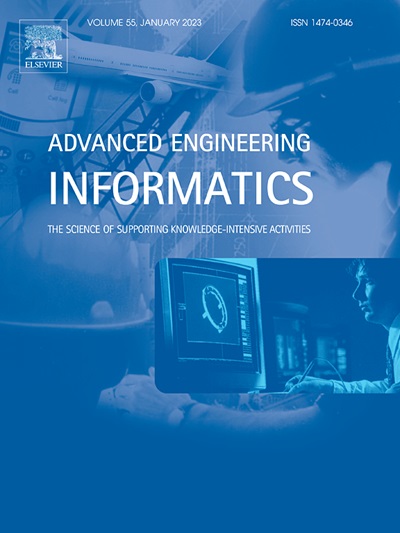Mental workload in worker-drone communication in future construction: Considering coexistence, cooperation, and collaboration interaction levels
IF 8
1区 工程技术
Q1 COMPUTER SCIENCE, ARTIFICIAL INTELLIGENCE
引用次数: 0
Abstract
While unmanned aerial vehicles (a.k.a. drones) have been recognized as potential robotic teammates that could be incorporated into the construction industry, communication between workers and drones may impose additional mental demands and workloads that could lead to workers’ mental overload on construction jobsites. To address this concern, this study examines and quantifies workers’ mental demands while communicating with drones at different human-drone interaction levels—coexistence, cooperation, and collaboration. During a futuristic bricklaying experiment wherein workers needed to communicate with drones at different interaction levels, psychophysiological sensors measured electrodermal activity, brain activation, and eye movements to assess whether the respective interactions affected workers’ mental demands. The results indicate that coexistence requires workers’ visual attention, whereas cooperation imposes affective and perceptual demands since workers were frustrated and confused when decoding and responding to messages from the drone. Moreover, higher levels of mental demands were identified in collaborative communications because sharing an object with nearby drones raised workers’ safety concerns. This research contributes to the body of knowledge by demonstrating workers experience varying dimensions of mental demands during communication with drones, and the study suggests strategies to enhance effortless worker-drone communication at coexistence, cooperation, and collaboration levels to improve worker well-being in future construction.
求助全文
约1分钟内获得全文
求助全文
来源期刊

Advanced Engineering Informatics
工程技术-工程:综合
CiteScore
12.40
自引率
18.20%
发文量
292
审稿时长
45 days
期刊介绍:
Advanced Engineering Informatics is an international Journal that solicits research papers with an emphasis on 'knowledge' and 'engineering applications'. The Journal seeks original papers that report progress in applying methods of engineering informatics. These papers should have engineering relevance and help provide a scientific base for more reliable, spontaneous, and creative engineering decision-making. Additionally, papers should demonstrate the science of supporting knowledge-intensive engineering tasks and validate the generality, power, and scalability of new methods through rigorous evaluation, preferably both qualitatively and quantitatively. Abstracting and indexing for Advanced Engineering Informatics include Science Citation Index Expanded, Scopus and INSPEC.
 求助内容:
求助内容: 应助结果提醒方式:
应助结果提醒方式:


